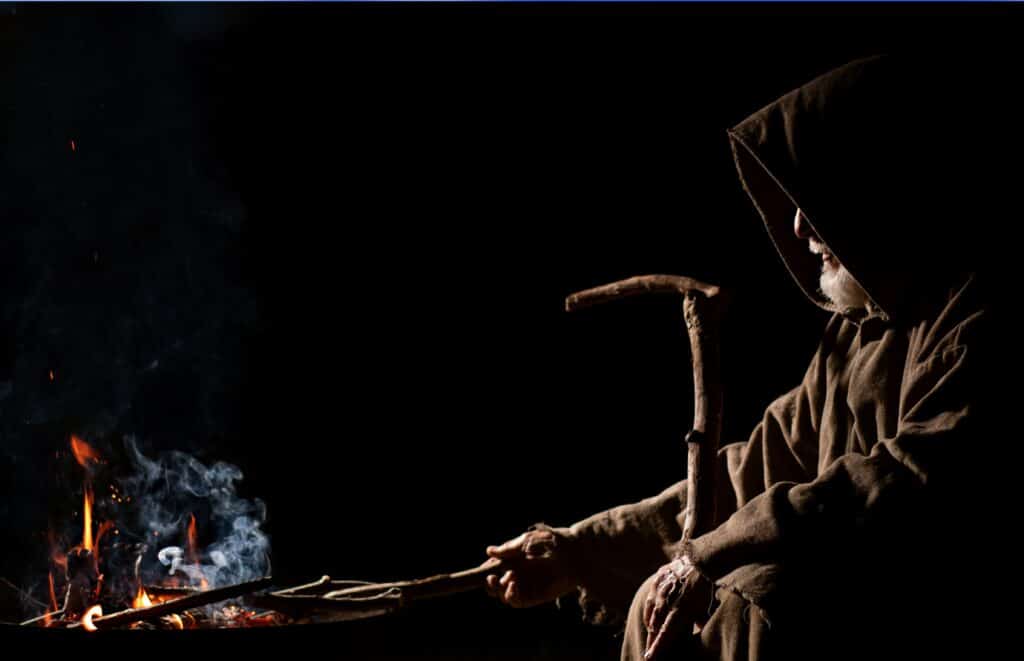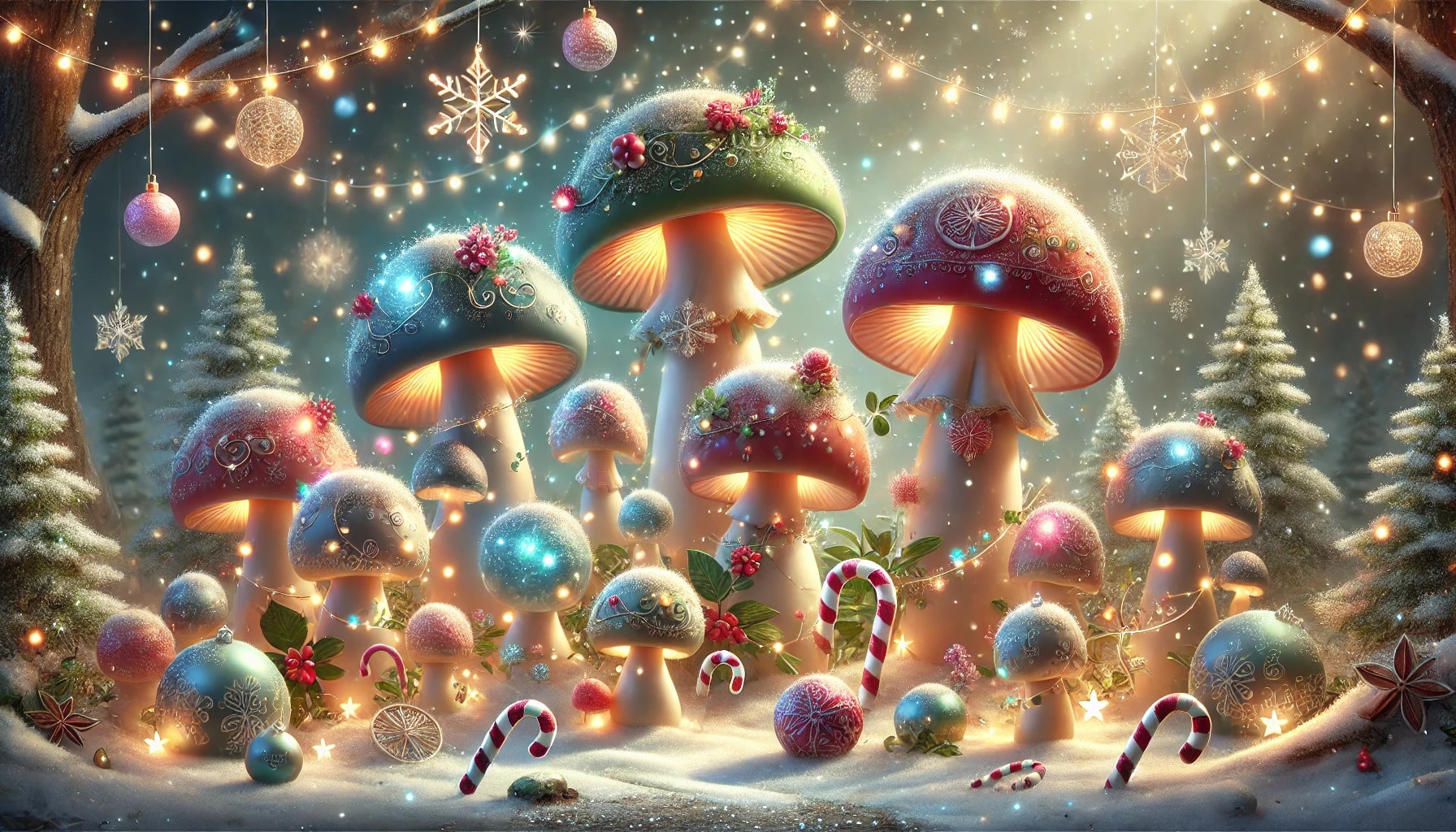
Anyone who hears the word druid probably thinks of an old wise man leading a ritual in ancient England. We associate it with a gray past, with natural peoples who lived according to the rhythms of nature. But even today you can run into druids. Although this new druidism is probably quite different from the old, the principles and underlying values and norms of the druids can still have much meaning today.
In northwestern Europe and England, the Celts lived. This was even before the Romans imposed and spread their culture through these areas. Druids were a type of priests, although their role was much more extensive than that. They were spiritual leaders, but also immersed themselves in science and spoke law. They mediated when there were conflicts and gave advice to tribal leaders.
There is evidence that Druidism was practiced as early as the fourth century BC. They played an important role in the society of the Celts. They were seen as the mediators between nature, which was seen as sacred, and the common people. They spoke justice and ensured that the tribe’s history was preserved. Druid training was no small feat. Sometimes these lasted as long as 20 years.
As mentioned, nature was seen as sacred. The Celts believed in different Gods (they were polytheistic). In nature you could see the signs of the Gods reflected, in the sun, moon and stars, and in trees, lakes, mountains and rivers. Consequently, these places were often sacred. The druids also viewed the elements of earth, water, fire and air as sacred.
The Celts lived according to the rhythms of nature, and the changes of the seasons were important moments to dwell on. This was a time when ceremonial festivals were celebrated: the winter and summer solstices and the spring and autumn equinoxes.
Unfortunately, not much has survived of druid culture. These people did not yet write everything down, and Celtic culture was partly supplanted when the Romans came. Even later, the Catholic saw Druidism as heretical and many of the rituals were banned. As a result, much knowledge has been lost.
Fortunately, druidism persisted underground when Christianity banned many of the druids’ rituals. Much effort was made by the people to preserve the ancient knowledge and keep the rituals alive. The 17th century saw a resurgence of Druidism and gave it more room to spread again. The revival of this movement is called Neo-druism.
It is now assumed that druids could be divided into three groups: bards, ovates and druids. These are groups, each with its own specialty. The bards are poets, storytellers and musicians. They learned the history of their people and disseminated it. The magic word can captivate, entertain and even enchant people.
The ovates immersed themselves in the healing power of trees, plants and herbs and also were soothsayers. They could make predictions using the Ogham (the Celtic alphabet, often carved on stones or sticks) or using signs from nature. The druids were the philosophers, teachers and religious leaders. Even today you can delve into the knowledge of the druids. There are training and education programs and if you complete them you can call yourself a druid. But is this knowledge of any use these days?
Those who delve into the knowledge of the druids are introduced to a new world. It is a well-known fact that many people today struggle with a lack of meaning. The church has fallen away, but nothing has taken its place. Druidism, by the way, is not a religion; it is more of a way of life. After all, you can decide what appeals to you in this. But it could occupy a place in your life that used to be occupied by the church.
The druids themselves saw nature as sacred, but they also believed in various Gods and Goddesses, such as Cernunnos and Brigid. In this you can find your own way, nothing is imposed on you. Christians, Hindus and Muslims can also become druids and stick to their own beliefs. By immersing yourself in Druidism, you can restore your connection to nature and to the earth itself. You can maintain a more natural rhythm by paying attention to the seasons and the lunar cycle. This can provide handholding in noisy times.
Working with rituals can also provide support. When there is something to celebrate or process, or when you have to say goodbye to something or someone, you can reflect on this through a ritual. The druids work in a circle (you can make your own with symbols, stones, feathers, flowers or whatever you like) and this is your own sacred space. In it you can pray, write or meditate. You can design your ritual yourself or use the tools found in literature or on the Internet.
There is a lot to learn from the druids. From ancient knowledge about trees and herbs, to poems and ancient stories, music, rituals, knowledge about Gods and Goddesses and divination methods. Working with the knowledge of the druids can help you find your own inner balance find a spiritual connection to nature.
Are you struggling with yourself, feelings of futility or the direction of your life? Also microdosing could help with this. Microdosing means taking a very small dose of a mind-altering drug. This can help in a subtle way with mental (and physical) problems, such as
anxiety
,
stress
and a lack of zest for life. Combining microdosing with a way of life like druidism may allow you to feel more connection to the world, the
nature
and the people around you. This will hopefully allow you to fully enjoy life again and get everything you want out of it.
In northwestern Europe and England, the Celts lived. This was even before the Romans imposed and spread their culture through these areas. Druids were a type of priests, although their role was much more extensive than that. They were spiritual leaders, but also immersed themselves in science and spoke law. They mediated when there were conflicts and gave advice to tribal leaders.
There is evidence that Druidism was practiced as early as the fourth century BC. They played an important role in the society of the Celts. They were seen as the mediators between nature, which was seen as sacred, and the common people. They spoke justice and ensured that the tribe’s history was preserved. Druid training was no small feat. Sometimes these lasted as long as 20 years.
As mentioned, nature was seen as sacred. The Celts believed in different Gods (they were polytheistic). In nature you could see the signs of the Gods reflected, in the sun, moon and stars, and in trees, lakes, mountains and rivers. Consequently, these places were often sacred. The druids also viewed the elements of earth, water, fire and air as sacred.
The Celts lived according to the rhythms of nature, and the changes of the seasons were important moments to dwell on. This was a time when ceremonial festivals were celebrated: the winter and summer solstices and the spring and autumn equinoxes.
Unfortunately, not much has survived of druid culture. These people did not yet write everything down, and Celtic culture was partly supplanted when the Romans came. Even later, the Catholic saw Druidism as heretical and many of the rituals were banned. As a result, much knowledge has been lost.
Fortunately, druidism persisted underground when Christianity banned many of the druids’ rituals. Much effort was made by the people to preserve the ancient knowledge and keep the rituals alive. The 17th century saw a resurgence of Druidism and gave it more room to spread again. The revival of this movement is called Neo-druism.
It is now assumed that druids could be divided into three groups: bards, ovates and druids. These are groups, each with its own specialty. The bards are poets, storytellers and musicians. They learned the history of their people and disseminated it. The magic word can captivate, entertain and even enchant people.
The ovates immersed themselves in the healing power of trees, plants and herbs and also were soothsayers. They could make predictions using the Ogham (the Celtic alphabet, often carved on stones or sticks) or using signs from nature. The druids were the philosophers, teachers and religious leaders. Even today you can delve into the knowledge of the druids. There are training and education programs and if you complete them you can call yourself a druid. But is this knowledge of any use these days?



Valid from Dec 17 to Dec 27, 2024
Use the code below at checkout to receive 10% off the entire order.

